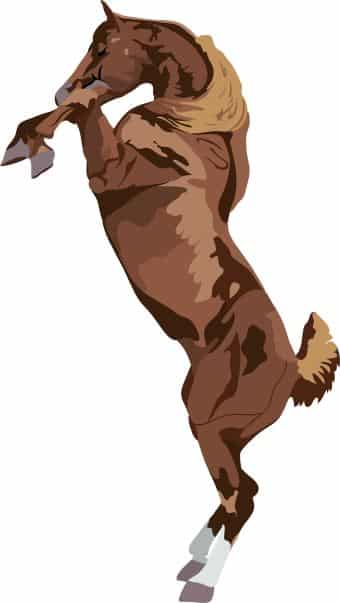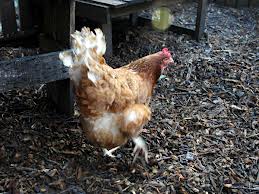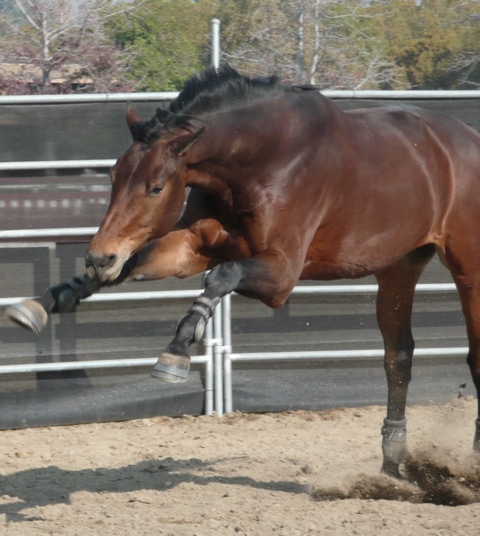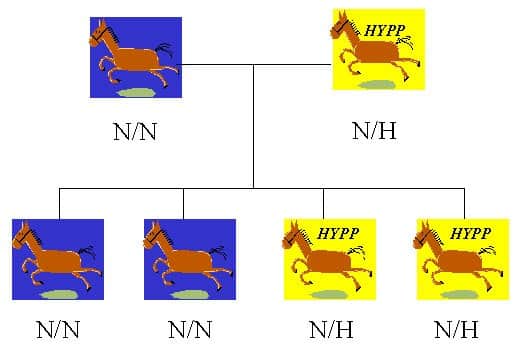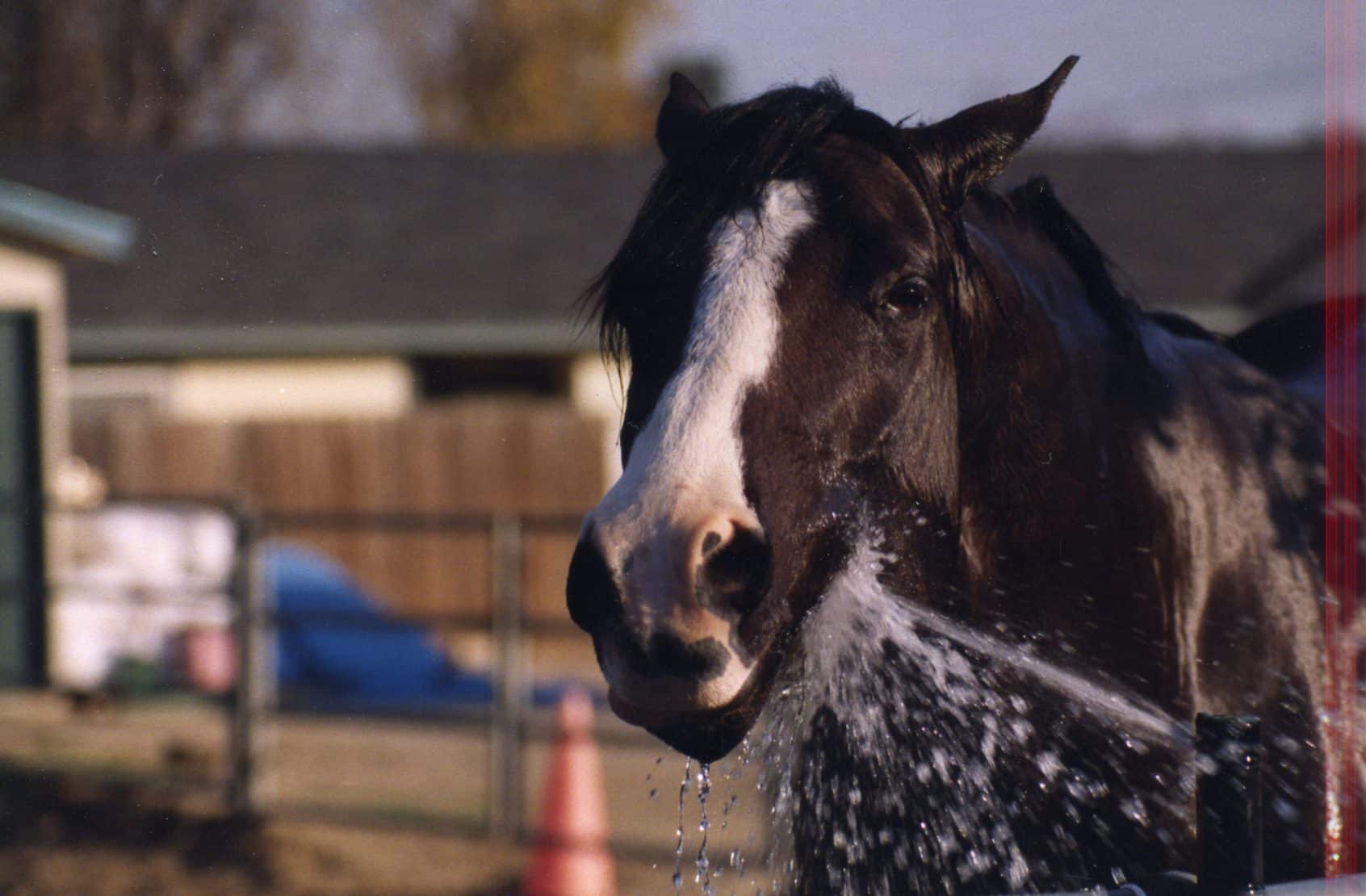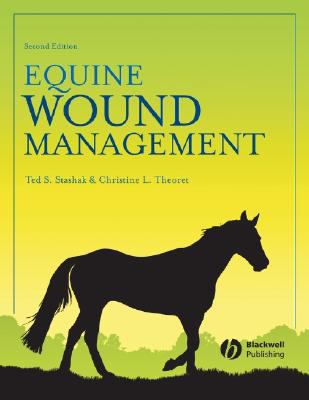One of the unfortunate events often associated with your horse being sick or lame is that you’ll sometimes
need to give him some sort of drug (or other substance, if you’re in to giving other substances). The biggest problem – insofar as giving drugs by one of these various routes – is that you’re trying to give them to horses. That means that while there may be many possible routes by which you can give a drug to your horse, there may not be any easy routes. Some horses will balk at the idea of a paste put in their mouths, sift through a pile of grain to get every kernel, meanwhile leaving a nice pile of drug powder at the bottom of the bucket, or bite, strike, or kick when you approach to stick them with a needle. Honestly, can you blame them?
There, in fact, many different ways that drugs can be administered – in the vein (IV), in the muscle (IM), in the mouth (PO), occasionally even under the skin (SQ – for subcutaneous), or, rarely, even in the skin (ID – intradermal).
Each of the methods of administration has its advantages and disadvantages.
1) IV (Intravenous) – Advantages: Fast, can give substances that are otherwise quite irritating to tissue (such as “bute”). Disadvantages: Requires someone with training, horses may not like it, can have some pretty severe consequences if you miss the vein.
2) IM (Intramuscular) – Advantages: Pretty fast, easier to do than IV. Disadvantages: Horses get tired of having volumes of liquid injected into their muscles, can occasionally get substances into veins that shouldn’t be in veins (muscles have veins in them), can rarely cause reactions, infections (sometimes serious), or abscesses.
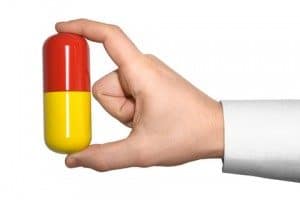
Horse pill
3) PO (orally) – Advantages: Medicine doesn’t have to be sterile, don’t have to poke the horse with needles. Disadvantages: horses may not eat powders, or like things put in their mouths; some medications, for example, penicillin, can’t be given to horses orally (they don’t absorb it). Oral pastes are nice, but tend to stick in your hair when horses spit them out.
4) SQ (Subcutaneous, i.e., under the skin) – The main reason that SQ injections aren’t used much is that there’s not much room under the horse’s skin. It’s easy to give, say, SQ fluids to a chocolate labrador, or a cat, who have all sorts of extra skin hanging around under which you can put some fluid (and imagine the possibilities with a sharpei!). But the skin of horses is pretty much shrink-wrapped onto their bodies; there’s just not a lot of room between the skin and the rest of the horse.
Then, there’s the dosing schedule, that is, assuming horses are dosed at all.
QUICK ASIDE – In veterinary school, I was told that 50% of the drugs that I prescribed would never be given. I didn’t believe it then. I do now. It’s kind of sobering, actually, when you think you’ve done a great job, thoughtfully prescribing the proper medication, and exact dosing schedule, only to find out that the bottle of antibiotics that you so carefully prescribed is still on the shelf in the tack room. Of course, if you never find this out, you tend to think of yourself as something of a medical marvel, giving yourself unwarranted credit for all sorts of medical successes (trust me, there are plenty of us out there). But, mostly, it speaks to the amazing tendency of the horse’s body to try to take care of itself, which then leads to the great – and entirely apt – quote by the 18th century French philosopher, Voltaire, who said, “The art of medicine consists of amusing the patient while nature cures the disease.”
Back to dosing schedules. Drugs doses are based on how quickly the drugs are removed from the body, and how much drug you want to be in the horses body. Obviously, you’re trying to achieve some sort of a balance here – too little drug isn’t going to do anything at all, and too much can have some pretty awful side effects, depending on the drug. Drugs are certainly not harmless, and there’s a reason that they are given on a certain schedule.
The problem is that dosing schedules and peoples’ schedules don’t always work out so well. If a drug is supposed to be given twice a day, ideally, that means every twelve hours. A drug that’s given twice a day reaches its peak, and adequate levels last in the horse’s system for about 12 hours, at which point the drug needs to be given again.
ANOTHER QUICK ASIDE – You may see your veterinarian write “b.i.d” or “t.i.d” (and often without periods, and with or without capital letters) when it comes to how frequently you’re supposed to give a drug. These are hallowed abbreviations, in Latin. BID is an abbreviation for “bis in die” which in Latin means, not too surprisingly, twice a day. TID is for three times a day, or “ter in die.” QID, which everyone hates, because it means that you’re having to annoy your horse four times a day, stands for “quater in die.”
Back to dosing schedules (again). When you are dosing a drug, you should take whatever schedule that you’ve been given and divide it into 24. So, if a drug is supposed to be given twice a day (bid), that means 24/2 = 12, and the drug should be given every 12 hours. You can quickly see what a mess giving a drug four times or more a day might make of your life.
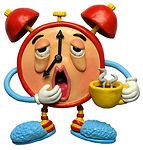 In practice, in my experience, this means that twice daily dosing is generally given more like 7 am, and 5 pm, and three times daily dosing gets done at 7 am, 5 pm, and 10 pm. This isn’t ideal, but, fortunately, doesn’t seem to cause a whole lot of harm, at least there aren’t reports of serious harm from not sticking strictly to the clock. And, happily, many of the more intense dosing schedules are prescribed when horses are hospitalized, which, happily, shifts the burden onto them (but, unhappily, shifts the burden of the expense onto you).
In practice, in my experience, this means that twice daily dosing is generally given more like 7 am, and 5 pm, and three times daily dosing gets done at 7 am, 5 pm, and 10 pm. This isn’t ideal, but, fortunately, doesn’t seem to cause a whole lot of harm, at least there aren’t reports of serious harm from not sticking strictly to the clock. And, happily, many of the more intense dosing schedules are prescribed when horses are hospitalized, which, happily, shifts the burden onto them (but, unhappily, shifts the burden of the expense onto you).
One last thing: when it comes to drugs, more is not necessarily better. That’s because drugs have what is known as a half-life. The half-life is how long it takes for half of the drug to be removed from the horse’s system. So, for example, phenylbutazone (“bute”) has a half-life of something like four hours. If you double the dose, all you do is add one half-life, or, in the case of bute, another four hours. But the thing is, even though you don’t increase the effect, you do greatly increase the risk of side effects when you double the dose. So, don’t increase the dose of your horse’s medication, thinking it will work “better.”
BOTTOM LINE? Give a prescribed medication at the proper dose, on the prescribed schedule. It’s not that hard.
If you have any questions about any of this, I hope you’ll ask your veterinarian (or email me). I did have one client that, when he ran out of his horse’s antibiotic medication, which were pills, to be given four time daily, simply switched to a different antibiotic pill, and kept the same schedule. While it may seem obvious to you that all medications aren’t the same, and may have different dosing schedules, this bit of insight escaped him, and within a couple of days, I got to treat his horse, who now had a raging, antibiotic induced, diarrhea. Happily, the horse got better, but the story does remind me of why it’s so hard to make something like drug dosing idiot-proof. Idiots are just so darned resourceful.

